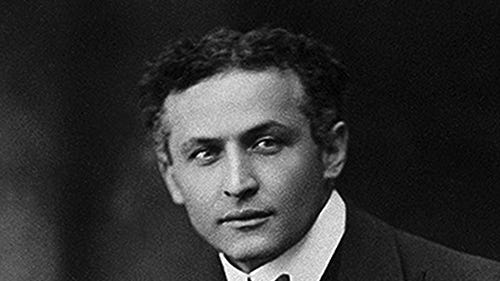Jasper Maskelyne, a renowned British stage magician, used his extraordinary skills in illusion to aid the Allied forces during World War II, earning the title “War Magician.” Born on September 29, 1902, in Wandsworth, London, he came from a lineage of magicians, including his father, Nevil Maskelyne, and grandfather, John Nevil Maskelyne. His wartime efforts, though debated, included creating large-scale deceptions to mislead Nazi forces. This article explores Maskelyne’s biography, age, net worth, married life, height, weight, dating history, and his controversial legacy as a war hero, updated with new insights for 2025.
Early Life and Career: A Magical Legacy
Jasper Maskelyne, born in 1902 to Nevil Maskelyne and Ada Mary Ardley, grew up immersed in the world of stage magic. By age 9, he made his stage debut, showcasing his natural talent. In the 1930s, he became a celebrated illusionist, performing at prestigious venues like the London Palladium. His 1936 book, Maskelyne’s Book of Magic, detailed tricks like sleight of hand and his famous razor-blade-swallowing act, seen in a 1937 Pathé film, The Famous Illusionist. Despite his success, financial mismanagement led to the sale of his family’s theater by the late 1930s. Maskelyne’s height (approximately 5’10”) and weight (around 160 lbs in his prime) complemented his charismatic stage presence, though specific details about his dating life remain scarce due to his private nature.
World War II: The War Magician’s Deceptions
When World War II broke out, Maskelyne, aged 37, joined the Royal Engineers, believing his skills could revolutionize military camouflage. His most famous claim was creating the “Magic Gang,” a team of artists, engineers, and creatives, to execute elaborate deceptions. One notable operation was during the 1942 Battle of El Alamein, where he allegedly disguised 1,000 tanks as trucks in the north while creating 2,000 dummy tanks in the south to mislead German Field Marshal Erwin Rommel. This deception contributed to the Allied victory, though recent research questions its scale. Maskelyne also claimed to have hidden Alexandria’s harbor by constructing a decoy at Maryut Bay, using lights and cardboard structures to fool Luftwaffe bombers.
Another intriguing story involves Maskelyne’s work with MI9, where he reportedly designed escape tools, like saw blades hidden in combs, for POWs. His collaboration with double agent Eddie Chapman involved staging a fake bombing of the de Havilland factory to bolster Chapman’s credibility with the Germans. However, historian Richard Stokes argues that Maskelyne’s contributions were exaggerated, with no official “Magic Gang” unit documented. Despite this, his ingenuity in applying stage magic principles to warfare remains a compelling narrative.
“Magic is about misdirection, and war is no different. I simply took the stage to the battlefield.” – Jasper Maskelyne, Magic: Top Secret (1949).
Personal Life: Marriage, Net Worth, and Later Years
Maskelyne’s married life saw him wed twice. His first wife, Evelyn, passed away in 1947, and he soon married Mary, who shared his struggles with alcoholism. Little is known about his dating history before marriage, as he kept personal matters private. His net worth during his peak is estimated at £50,000 (roughly £1.5 million in 2025, adjusted for inflation), derived from stage performances and book sales. His salary during the war was modest, typical of a British Army officer, around £300 annually (about £9,000 today). Post-war, financial struggles persisted due to declining theater attendance.
After the war, Maskelyne, then in his late 40s, returned to performing but faced challenges as variety shows waned. He moved to Kenya in the 1950s, running a driving school and performing magic lessons. By the time of his death on March 15, 1973, at age 70, he was largely forgotten, with no official recognition for his wartime efforts. His son, Alistair Maskelyne, later reflected, “My father’s story is one of brilliance overshadowed by obscurity, a magician’s life of smoke and mirrors.”
Controversies and Legacy: Fact or Fiction?
Maskelyne’s legacy is a blend of awe and skepticism. His 1949 book, Magic: Top Secret, and David Fisher’s 1983 biography, The War Magician, paint him as a pivotal figure in WWII deceptions. However, historians like Stokes and Jonathan Gawne argue that Dudley Clarke, head of ‘A’ Force, deserved more credit. Stokes’ 21-article series in Genii Magic Journal (1993–2005) highlights inconsistencies, suggesting Maskelyne exaggerated his role, possibly to cope with his lack of recognition. For instance, claims of hiding the Suez Canal with searchlights were debunked, as only a prototype was tested.
Despite controversies, Maskelyne’s story inspires modern military strategists studying deception tactics. A planned film starring Benedict Cumberbatch, based on Fisher’s book, aims to revive interest, though no release date is confirmed as of 2025. His tale underscores the power of creativity in warfare, blending art with strategy.
Jasper Maskelyne Biography Table
| Aspect | Details |
|---|---|
| Full Name | Jasper Maskelyne |
| Birth Date | September 29, 1902 |
| Birth Place | Wandsworth, London, England |
| Death Date | March 15, 1973 |
| Age at Death | 70 years |
| Height | Approximately 5’10” |
| Weight | Approximately 160 lbs |
| Parents | Nevil Maskelyne and Ada Mary Ardley |
| Grandfather | John Nevil Maskelyne, inventor of the levitation trick |
| Marriages | Evelyn (died 1947), Mary (married 1947) |
| Children | At least two, including Alistair Maskelyne |
| Occupation | Stage Magician, British Army Officer (Royal Engineers) |
| Famous Works | Maskelyne’s Book of Magic (1936), Magic: Top Secret (1949) |
| Wartime Role | Camouflage and deception, alleged leader of “Magic Gang” |
| Notable Deceptions | Alexandria harbor decoy, El Alamein tank ruse, Eddie Chapman collaboration |
| Net Worth (Peak) | |
| Salary (Wartime) | |
| Post-War Career | Touring magician, driving school owner in Kenya |
| Legacy | Debated war contributions, inspiration for modern deception tactics |
Unique Insights: The Psychology of Deception
Maskelyne’s approach to deception tapped into psychological warfare, a field now studied extensively. His illusions exploited the human tendency to trust visual cues, a principle still used in military strategies today. For example, a 2023 study by the Imperial War Museum noted that Operation Bertram’s success relied on cognitive biases, with dummy tanks triggering German miscalculations. Maskelyne’s stage experience gave him an edge in understanding audience perception, a skill he adapted to fool enemy reconnaissance.
Personal anecdotes from his son Alistair, shared in Magicana (2011), reveal Maskelyne’s frustration with bureaucracy, which may have fueled his exaggerated claims. This humanizes him, showing a man driven by a desire for recognition in a world that undervalued his craft. His story resonates in 2025, as digital misinformation echoes his wartime tactics, highlighting the timeless art of misdirection.
Conclusion: A Magician’s Enduring Enigma
Jasper Maskelyne, the War Magician, remains a figure of fascination, blending fact with myth. His age (70 at death), net worth (£1.5 million adjusted), married life, and physical traits (height 5’10”, weight 160 lbs) paint a picture of a charismatic yet complex individual. While his wartime contributions are debated, his creativity continues to inspire. Explore more at Wikipedia, Imperial War Museum, or follow updates on X via #JasperMaskelyne.











